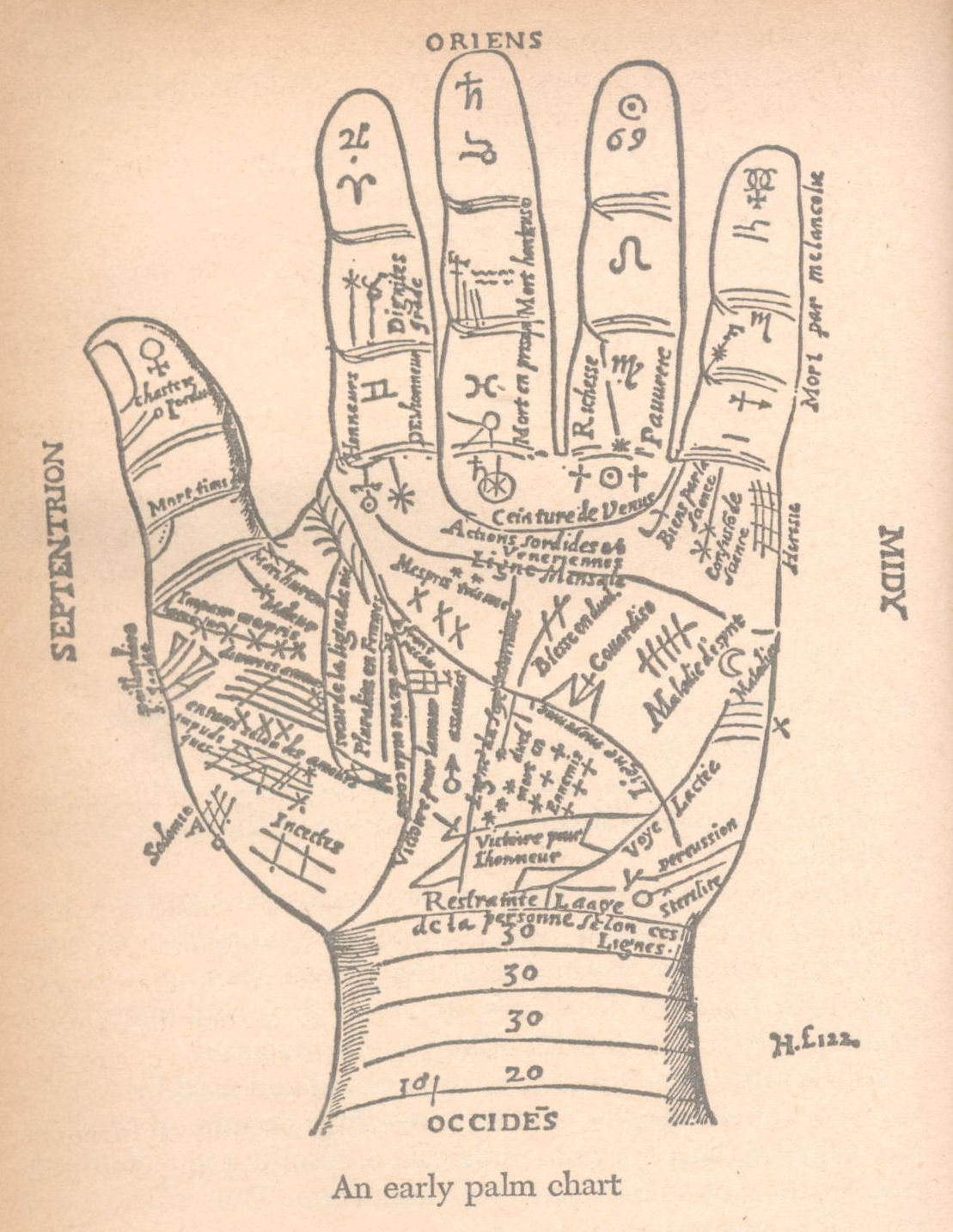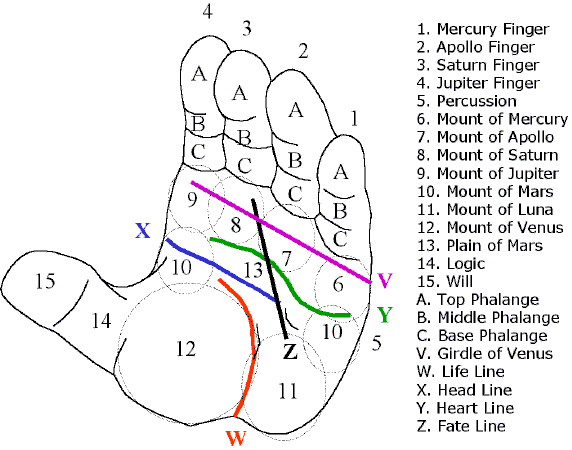10. PALMISTRY
10. PALMISTRY
*************
The subject of palmistry, or the study of the human hand, is composed of two parts: chirosophy, or the mystical significance of the lines, markings, and developed areas; and chirognomy, or an analysis of the shape and formation of the hand, thumb, and fingers.

While the two are closely interwoven, the emphasis was originally on chirosophy, which was closely identified with astrology, as witness the names of the planets as applied to the areas called mounts. The lines, too, were generally interpreted in divinatory terms, as with other psychic sciences.
At the same time, formations were noted and used by expert in the art of chirosophy, and their readings became so accurate that scientific surveys were undertaken, resulting in a definitive classification of shapes and their indication. Thus chirognomy came into vogue.
In more recent years, studies of a purely physiological nature have indicated that lines and other features may be affected by retarded development, ill health, and other physical causes, thus further verifying the traditions of chirosophy by the findings of chirognomy.
Most interesting of these development the fact that character traits can be noted by a preliminary observation of a person’s hands, even at a distance, and often at a glance. Unquestionably, the early chirosophists must have recognized those points, and the later chirognomists made special note of them. So in all hand analysis these factors should be considered:
LARGE HANDS indicate an ability for detail. SMALL HANDS show the reverse, because of an impatient trend.
Mannerisms are easily observed and very revealing. The graceful, lightly moving hand denotes a person who is popular at social gatherings and at the office. It is a sign of affection and interest in others.
CLENCHED HANDS are the sign of a dynamic, restless, pushing personality, but one that is usually self-reliant.
EXTENDED FINGERS show extremists who like attention, especially when the little finger is extended while holding a cup or glass. This is also a moody sign.
NERVOUS, GESTURING HANDS are those of quick thinkers, but with an inclination to be overanxious.
RELAXED HANDS are the token of a practical person, who is apt to be interested in almost everything.
HANDS THAT HIDE IN POCKETS, or are clasped together as though hiding their palms, are an indication of good listeners, but also those who change their opinions too easily.
FINGERS HELD CLOSE TOGETHER show good leaders, but often a stingy nature.
FINGERS HELD SLIGHTLY APART denote a trustful, friendly disposition.
FINGERS HELD FAR APART indicate persons who are unconventional but extravagant.
FINGERS HELD SO THAT THEY CURVE INWARD are those of persons who are secretive, but who like things their own way.
The rule for reading palms is that the subjective (left) hand should be examined first. It indicates the natural inclinations and abilities. The right hand is called the objective hand. It shows how far the person may follow the pattern indicated by the subjective hand. With left-handed people the right hand is the subjective and the left is the objective.
The palm itself is divided into nine sections called mounts. These are areas that indicate the traits of the person. The lines and other markings tell how those traits are used. The fingers and thumbs add or detract, depending upon their individual qualities. Lines can and often do change. So does the entire appearance of the hand, just as the face changes.
It is interesting to study the hands of babies and children as they grow up. Often new indications will appear to verify the development of certain abilities.
Lines can be eradicated temporarily or permanently by shock or severe illness.
The method for reading the palm is the key to the explanatory sections that follow.








Leave a Reply